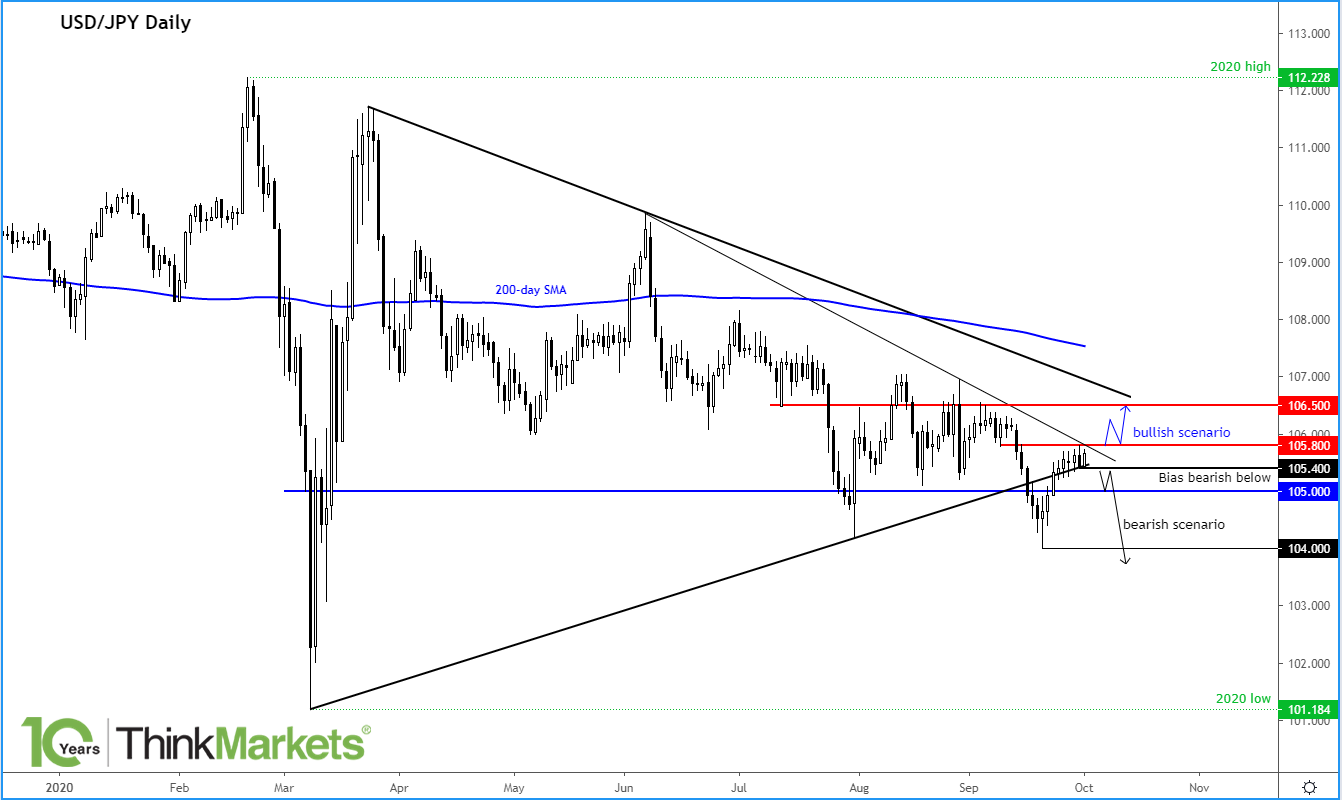Ahead of the US jobs report on Friday, the markets started the new month in a risk-on fashion, before European and US stock indices came off their highs in the afternoon. In FX, the dollar initially fell against most major currencies, but later it also eased off its lows and rose slightly against the yen as US government bond yields edged higher on the back of some mixed-to-positive macro data. The pound seesawed amid mixed Brexit-related headlines. Crude prices fell 4% while gold rose 1% and silver slightly more.
Mixed data from world’s largest economy
The latest macro data releases from the world’s largest economy have been mixed today, but overall, slightly positive. Jobless claims came in at 837K versus 850K expected, and down from 873K the week before. Construction spending rose 1.4% m/m vs. 0.8% expected. Personal spending rose 1% month-over-month in August, following gains of 5.6% in June and 1.5% in July. However, personal income fell unexpectedly sharply by 2.7% month-over-month. The ISM Manufacturing PMI also disappointed at 55.4 vs. 56 expected and last.
Nonfarm payrolls in focus
Investors are slowly turning their attention to Friday’s release of US monthly jobs report and were wondering whether to take their feet off the gas ahead of this key macro event.
Employment has beaten expectations in every single month since that massive plunge in April nonfarm payrolls. The pace of employment growth has been slowing down, however, and on Friday analysts expect to see the first sub-million growth in jobs for months. Specifically, a reading of 900K is expected after last month’s 1371K print.
Some positive NFP indicators
Some of the pre-NFP leading indicators have been stronger than expected. The ADP report on Wednesday, for example, showed a much bigger-than-expected rise of 749K in private nonfarm payrolls jobs, which was 100K better than average forecast. However, one of the most important leading NFP indicators – the employment component of the ISM services PMI – will not be released until Monday. This makes predicting the headline jobs even more difficult to predict. Was it ever easy?
How will the markets react to the jobs report?
A small disappointment is unlikely to cause too much of a reaction, while a slightly positive number may actually be good news for the dollar as it will likely keep risk assets supported. The employment component of the ISM manufacturing PMI rose 3.2 points to 49.6, which is potentially good news for Friday’s jobs report, even if the sub 50 reading still points to contraction.
However, a massive beat or disappointment is the key risk. In the case of a massive disappointment, risk sentiment will likely be hurt, which could weigh heavily on the indices and support the safe-haven Japanese yen. In this case, while the dollar may actually find some haven flows against commodity dollars and other risk-sensitive currencies, the USD/JPY should drop. But in the event of a massive beat, the dollar should rally across the board, especially against the yen.
Chart to watch: USD/JPY
Ahead of the jobs report, and given the above fundamental considerations, our featured chart is the USD/JPY. Below I have laid out two tradable scenarios on this pair:

Source: ThinkMarkets and TradingView.com
A break and hold below 105.40ish should be negative, potentially leading to a drop to 105.00 and then towards 104.00. Meanwhile a break and hold above 105.80 resistance could see rates head to 106.50 before deciding on its next move. The breakout or breakdown could obviously happen before the jobs report is out. If so, traders will need to take care of their risk management carefully around the time the jobs report is published on Friday.
I have actually been expecting the USD/JPY to fall for weeks, if not months. However, due to the risk rally, this USD pair has held its own well while most other USD/XXX pairs rallied. But Friday’s jobs data could potentially be the trigger behind a sharp breakdown – which is my base case scenario.
Indeed, the dollar’s overall trend remains bearish. The greenback’s mixed performance on Thursday came on the back of three days of consecutive falls for the Dollar Index. Those falls were not enough to stop the index from closing higher in September, which itself came after a sharp 4-month sell-off. So, I see September as an oversold bounce, in an overall bearish trend for the dollar.